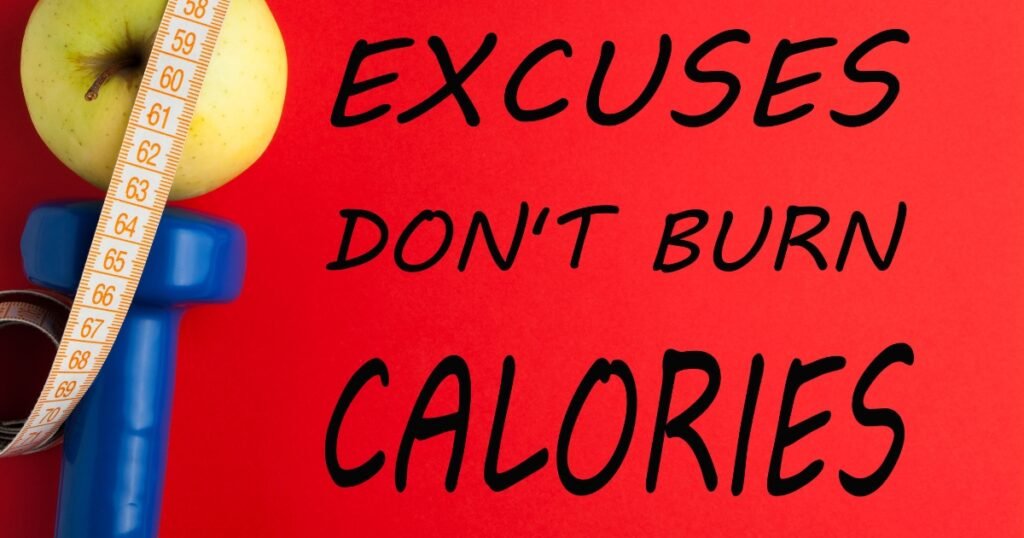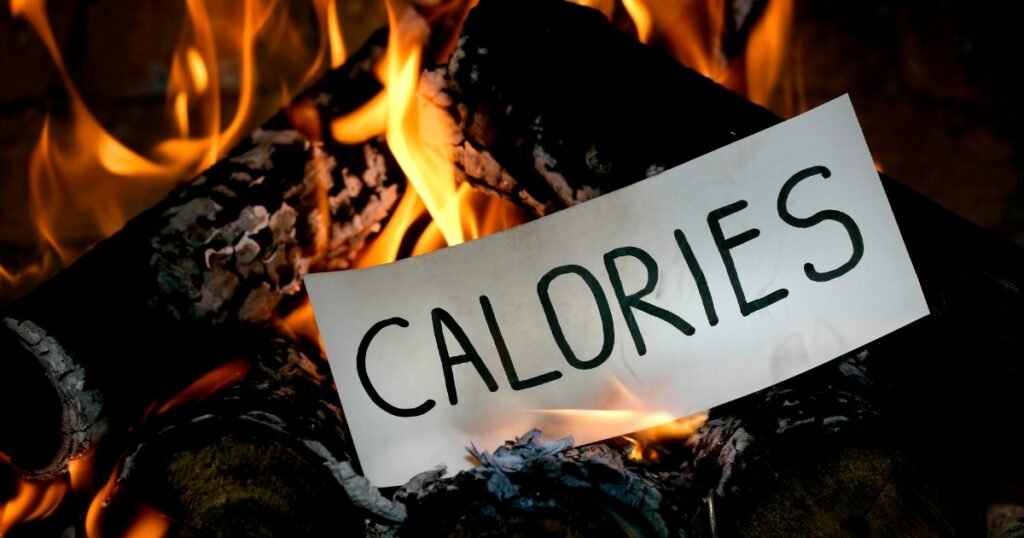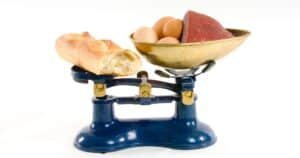Last Updated on 22 June 2024
Calories Burned Calculator
Calories Burned
Total: calories
In the quest for weight loss and maintaining a healthy lifestyle, understanding calorie burn is crucial. Calorie burn refers to the amount of energy expended by the body during various activities, including exercise and daily tasks. It plays a vital role in weight management and overall health. By knowing how many calories you burn, you can make informed decisions about your diet and exercise routine.
Calculating the number of calories burned can be complex, but it doesn’t have to be. With the help of a calories burned calculator, you can easily estimate the amount of energy you expend during different activities. This calculator takes into account factors such as your body weight, activity level, the duration of the exercise, and the type of exercise you engage in. Understanding the amount of calories burned during exercise is crucial for maintaining a healthy lifestyle, and a calorie-burn calculator can make it easier to track your progress.
In this article, we will delve into the basics of calorie burn, including the definition of calories and their role in weight management. We will also explore the factors that influence caloric expenditure and the impact of different exercises on calorie burn. Additionally, we will guide you through the process of using a calorie calculator to calculate calories burned per activity. Finally, we will provide tips and tricks for maximizing your workout and increasing calorie burn.
By the end of this blog, you will have a clear understanding of how to calculate calories burned per activity and how to use this information to support your weight loss and fitness goals.
Understanding Calorie Burn: The Basics
Before we dive into the details of calorie burn, it is important to understand the basics. Calorie burned, scientifically known as energy expenditure, refers to the amount of energy your body utilizes during various activities. It includes two main components: Basal Metabolic Rate (BMR) and Physical Activity.
Your BMR is the amount of energy your body needs to perform its basic functions, such as breathing, circulation, and cell production, while at rest. It varies depending on factors such as age, gender, genetics, and body composition. Physical activity, on the other hand, includes any exercise or daily activities that significantly contribute to calorie burn.
The rate at which your body burns calories is known as your metabolic rate, which can vary from person to person. Understanding these basic concepts will help you grasp the importance of calorie burn in weight management and overall health.
Defining Calories and Their Role in Weight Management
To understand calorie burn, we must first define calories and their role in weight management. In simple terms, a calorie is a unit of measurement for energy. When it comes to food and nutrition, calories refer to the amount of energy that is required for the body to function.
Weight management is all about finding a balance between the number of calories consumed and the number of calories burned. If you consume more calories than your body needs, the excess energy is stored as body fat, leading to weight gain. However, weight gain doesn’t necessarily mean getting fat, as people in the fitness industry know very well. The practice of “bulking” within fitness refers to the practice of eating more calories than the calories burned by lifting weights and, therefore, being in a caloric surplus state in pursuit of muscle growth.
On the other hand, if you burn more calories than you consume, your body taps into its fat stores for energy, resulting in weight loss in the long term. Understanding the role of calories in muscle growth is crucial for effective weight management. By understanding the role of calories in weight management, you can make informed choices about your calorie intake and exercise routine. It’s important to strike a balance between consuming enough calories to fuel your body’s needs and creating a calorie deficit for weight loss.
How Your Body Burns Calories: An Overview
Now that we know what calories are and their role in weight management, let’s explore how your body burns calories. Your body burns calories through a process known as energy expenditure, which refers to the amount of energy your body utilizes to perform its daily functions. Age, gender, body weight, and body composition are just a few variables that can affect your metabolic rate, which is the rate at which your body burns calories. Generally, individuals with higher body weights tend to have higher metabolic rates, as it requires more energy to support a larger body.
Your level of physical activity and lack of sleep have an impact on your metabolic rate in addition to your calorie burn. Engaging in exercise and daily activities increases your energy expenditure, leading to more calories burned. However, not getting adequate sleep can cause you to burn fewer calories. Not only will you feel more fatigued and possibly exercise less, but a lack of sleep can also reduce your metabolism.
The type of exercise you do, the intensity, and the duration of your workout all play a role in determining the number of calories burned by different people.Understanding how your body burns calories can help you make informed decisions about your exercise routine and overall lifestyle to support your weight management goals.
Factors Influencing Caloric Expenditure
Now that we have a basic understanding of calorie burn, let’s explore the factors that influence caloric expenditure. Several factors can affect how many calories you burn, including your activity level, metabolic rate, muscle mass, and body composition.
Activity level refers to the amount and intensity of physical activity you engage in. The more active you are, the more calories you are likely to burn. Your metabolic rate, which is influenced by factors such as age, genetics, and hormone levels, also plays a role in determining your calorie burn and how much energy you expend.
Muscle mass is another important factor. Muscle tissue burns more calories at rest compared to fat tissue, so individuals with higher muscle mass tend to have higher metabolic rates and burn more calories. Additionally, body temperature can also play a role in caloric expenditure. People tend to burn more calories in warmer environments, as a higher temperature increases body temperature and allows the body to direct energy towards calorie burn rather than warming the body. Lastly, body composition, which refers to the proportion of muscle, fat, and other tissues in your body, can also affect your caloric expenditure.
By understanding these factors, you can make informed decisions about your exercise routine and overall lifestyle to optimize calorie burn and support your weight management goals.
Impact of Different Exercises on Calorie Burn
Not all exercises are created equal when it comes to calorie burn. The number of calories you burn during exercise depends on various factors, including the type of exercise, the intensity, and the duration.
Generally, high-intensity exercises such as running, cycling, and swimming tend to burn more calories compared to low-intensity exercises like walking or yoga. The more effort and energy you put into your workout, the more calories you are likely to burn.

The duration of your exercise also plays a role. Longer workouts generally result in more calories burned. Additionally, exercises that engage multiple muscle groups simultaneously, such as strength training or HIIT (high-intensity interval training), can increase calorie burn even after your workout due to the energy required for muscle repair and recovery.
By incorporating a variety of exercises into your routine and challenging yourself with higher intensity workouts, you can maximize calorie burn and support your weight management goals.
The Role of Metabolism in Calorie Burning
Metabolism plays a crucial role in calorie burning. Your metabolic rate, which refers to the rate at which your body burns calories, is influenced by various factors such as age, gender, body weight, and body composition.
Basal metabolic rate (BMR) is the amount of energy your body needs to perform its basic functions while at rest. It accounts for a significant portion of your total calorie burn. BMR varies between individuals based on factors such as age, gender, genetics, and body composition.
In addition to BMR, your metabolic rate is also influenced by your activity level and the thermic effect of food (TEF), which refers to the energy required for digestion and metabolism of food. By understanding the role of metabolism in calorie burning, you can make informed decisions about your diet and exercise routine to support your weight management goals.
Now that we understand the basics of calorie burn and the factors that influence it, let’s explore how to calculate calories burned per activity. Using a calorie calculator, you can estimate the amount of energy you expend during different activities.
A calorie calculator takes into account factors such as your body weight, activity level, and the type of exercise you engage in. By inputting this information, the calculator provides an estimate of the number of calories burned during a specific activity.
Calculating calories burned per activity can be a useful tool for tracking your progress, setting goals, and adjusting your exercise routine as needed. It provides valuable information about your total energy expenditure and can help you make informed decisions about your weight management journey.
Maximizing Your Workout: Tips and Tricks
To maximize your workout and increase calorie burn, consider incorporating the following tips and tricks into your routine:
- Create a calorie deficit by burning more calories than you consume.
- Include high-intensity interval training (HIIT) in your workouts, which involves alternating between periods of intense exercise and active recovery.
- Incorporate strength training to build lean muscle mass, which can increase your metabolic rate and calorie burn.
- Vary your exercises to challenge different muscle groups and prevent plateauing.
- Stay consistent with your exercise routine to maintain calorie-burning momentum.
These strategies can help you optimize your workouts and increase calorie burn, supporting your weight management goals. Remember to consult with a health care provider or fitness professional before making any significant changes to your exercise routine.
Choosing Activities for Maximum Calorie Burn
When it comes to choosing activities for maximum calorie burn, several factors come into play. Consider the following when selecting exercises:
- Calorie burn: Look for activities that burn a high number of calories per minute.
- Variety of factors: Take into account your fitness level, preferences, and any physical limitations.
- Intensity: Choose exercises that allow you to work at a high intensity to maximize calorie burn.
- Type of exercise: Incorporate a mix of cardiovascular exercises, such as running or cycling, and strength training to target different muscle groups.
By considering these factors and choosing activities that align with your goals and abilities, you can maximize calorie burn and make your workouts more effective.
Incorporating High-Intensity Interval Training (HIIT)
High-Intensity Interval Training (HIIT) is a popular exercise method that can significantly increase calorie burn and metabolic rate. It entails brief bursts of intense exercise and periods of active recovery. Here are some key benefits of incorporating HIIT into your workout routine:
- Increased calorie burn: HIIT workouts can help you burn more calories in a shorter amount of time compared to traditional steady-state cardio exercises.
- Boosted metabolic rate: HIIT can increase your metabolic rate, allowing you to continue burning calories even after your workout is complete.
- Improved cardiovascular fitness: HIIT workouts challenge your cardiovascular system, improving your overall fitness level.
- Time efficiency: HIIT workouts are typically shorter in duration, making them a great option for individuals with limited time for exercise.
Incorporating HIIT into your routine can be as simple as adding short bursts of high-intensity exercise, such as sprints or burpees, followed by active recovery periods. Remember to start slowly and gradually increase the intensity and duration of your HIIT workouts.
Beyond Exercise: Other Components of Calorie Burn
While exercise is an important component of calorie burn, there are other factors to consider as well. These include:
- Thermic Effect of Food (TEF): Digesting and metabolizing food requires energy, contributing to your overall calorie burn.
- Daily activities: Non-exercise activities, such as walking, cleaning, and standing, also contribute to your calorie burn throughout the day.
- Overall health: Factors such as stress levels, sleep quality, and hormonal balance can affect your metabolic rate and calorie burn.
- Caloric deficit: To lose weight, it’s important to create a caloric deficit by burning more calories than you consume.
By paying attention to these other components of calorie burn and maintaining a balanced lifestyle, you can optimize your overall calorie burn and support your weight management goals.
Daily Activities That Increase Caloric Expenditure
Daily activities play a significant role in increasing caloric expenditure and promoting weight management. Even simple tasks can contribute to burning calories throughout the day. For example, activities like walking, cooking, cleaning, and standing in line can all help to increase the number of calories burned. Engaging in these daily activities, along with regular exercise, can make a significant difference in your overall caloric expenditure and help you burn more calories throughout the day.
By incorporating more movement into your daily routine, whether it’s through daily activities or regular exercise, you can gradually increase your caloric expenditure and promote a healthier lifestyle. Remember, every little bit counts, and even small changes can add up to significant calorie burn over time.
The Effect of Diet on Your Caloric Balance
While daily activities contribute to caloric expenditure, the effect of diet on your caloric balance is equally important. Calorie intake plays a crucial role in determining whether you are in a calorie surplus or deficit. A balanced diet that includes a variety of nutrient-dense foods can help optimize the thermic effect of food, which is the energy required to digest and metabolize the food you eat.
By consuming a balanced diet and eating fewer calories (creating a calorie deficit by burning more calories than you consume), you can promote weight loss and achieve your desired caloric balance with professional advice. It’s important to remember that sustainable weight management is a combination of both diet and physical activity, and finding the right balance is key to achieving your goals.
Addressing Common Myths About Calorie Burning
There are several common myths surrounding calorie burning that can impact weight loss efforts. One such myth is the belief in “fat-burning” zones, suggesting that exercising at a lower intensity burns more fat. In reality, the total calorie burn is what matters for weight loss, regardless of the intensity. Another myth is the idea that burning more calories automatically leads to weight gain. While it’s true that consuming more calories than you burn can lead to weight gain, the key is to find a balance between calorie intake and expenditure to achieve your desired weight loss goals.
Debunking Misconceptions: Calories Burned vs. Fat Loss
The relationship between calories burned and fat loss is often misunderstood. While calorie burn is a factor in fat loss, it is not the sole determinant. Fat loss is primarily achieved through creating a caloric deficit, which means burning more calories than consumed. This deficit prompts the body to use stored fat for energy, leading to weight loss. However, the total calories burned include those from fat, carbohydrates, and proteins. To enhance fat loss, it is important to engage in exercises that target fat, such as aerobic activities. Additionally, maintaining a balanced and nutrient-dense diet helps optimize the fat-loss process by creating a sustainable caloric deficit and preserving lean muscle mass.
The Truth About “Fat-Burning” Zones
“Fat-burning” zones have gained popularity in the fitness industry, with claims that exercising within a certain heart rate range maximizes fat burning. However, the truth about these zones is not as straightforward as it seems. While exercising at a lower intensity predominantly uses fat as a fuel source, the total calorie burn during higher-intensity workouts is generally higher. High-intensity exercises, such as interval training or weightlifting, increase post-exercise calorie consumption due to the energy required for muscle repair and recovery.

Additionally, the metabolic rate remains elevated for a longer period after high-intensity workouts, resulting in continued calorie burn. Therefore, while exercising in the “fat-burning” zone may have its benefits, it is essential to consider the overall calorie burn and metabolic rate when designing a workout routine for weight management.
Understanding how your body burns calories is crucial for effective weight management. Factors like exercise type, intensity, and metabolism play a significant role in calorie expenditure. By incorporating high-intensity interval training and daily activities that boost caloric burn, you can optimize your workout routine. Remember, diet also impacts your caloric balance. Debunking myths about calorie burning, such as the “fat-burning” zones, helps you make informed decisions. Utilize accurate calorie calculators to estimate calories burned per activity effectively. Keep moving, stay active, and make healthy choices to achieve your fitness goals.









